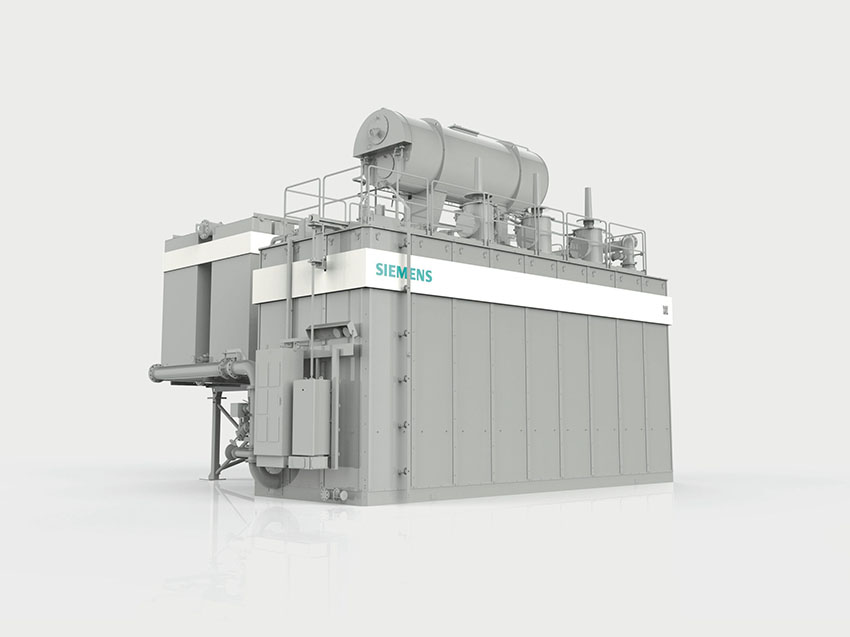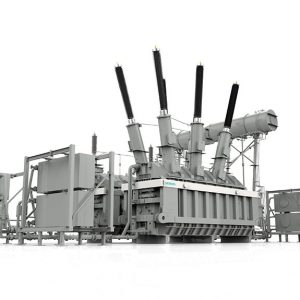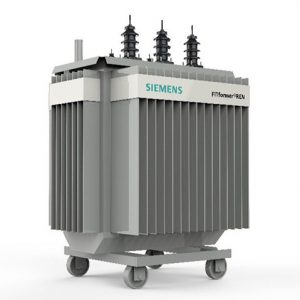Maximum flexibility and cost effectiveness
Shunt reactors and series reactors are used widely in AC networks to limit overvoltage or shortcut current in power transmission. With a growing number of high-voltage overhead lines in a fast-changing energy environment, both shunt and series reactors play a key role in stabilizing network systems and in increasing grid efficiency. Range: series reactors, variable and fixed shunt reactors Rated power: from ≤10MVAr to 300MVAr Rated voltage: from 33kV to 800kV Features: compact, robust design; stable performance over service life; 3ph testing up to highest voltage and power levels; state-of-the-art technology and design tools Optional features: low-noise/low-loss version, extended 80%-regulation range, green design options
Description
Pushing the boundaries of reactor technology
Reactors are real all-rounders and grid trouble-shooters. In conventional electricity transmission grids shunt reactors control voltage and compensate reactive power, while series reactors change load flow and limit short-circuit currents. With the increase of renewable and distributed power generation reactors – and variable shunt reactors in particular – play a significant role in today’s energy landscape with its higher fluctuation in power feed-in. Siemens’ reactors come with benefits at various levels to help grid operators achieve and maintain a reliable and secure power supply system:
Reliability
Measuring reliability
The high number of units in service – more than 800 units manufactured over the last decade alone – serves as proof of the validity of our design laws. In our effort to ensure long and reliable service life, we strive for minimum tolerances in manufacturing and insist on high-quality materials. Our suppliers worldwide are required to comply with the high standards, to which we hold ourselves. The result is a failure rate that is nothing short of impressive – we’ll gladly provide you with our latest mean time between failures (MTBF) figures.
MTBF1) of Siemens shunt reactors Number of units: 820 Total service years: 4,361 Number of failures: 5 External failure rate: 0.115 % Meantime between failure: 872 years 1) 2004-2013 evaluatedQuality
Our philosophy is quality
Our systematic approach to quality supports our relentless pursuit of precision and customer satisfaction. It rests on three pillars:
Precision
Utmost precision at every stage
We build on decades of experience to achieve the high signature precision of our reactors. Low levels of vibration, noise, and losses, which remain stable over the entire service life, require utmost precision at every stage of the manufacturing process, from manufacturing to testing. To ensure this precision we employ highly qualified personnel and our very own design analysis tools.
Economic efficiency
Dedicated to your commercial success
Siemens shunt and series reactors are the most cost-efficient solutions for reactive power compensation and short-circuit current limitation in the market. They come with strong commercial customer benefits, such as lower reactive power demand, lower losses and higher grid capacity. Their balanced load flows enable customers to avoid expensive grid extension.
- During their long service life, Siemens reactors reward customers with an outstandingly low failure rate and stable product performance over their entire service life.
- To help customers find the most cost-efficient solution – a solution that not only matches specifications but fulfils their needs – Siemens Transformers offers in-house grid consulting.
- Projects are executed smoothly and on-time. Compliance with specified values in test field is a matter of course.
- Compact reactor designs keep the cost of substation construction low.
- State-of-the-art technology and highly qualified personnel, also designing and manufacturing most complex products like HVDC transformers or phase shifters.
Design Consulting
Get the most out of our reactor designers
The design process for reactors differs radically from that of transformers: Owing to their special core, the mechanical design of reactors tends to be more complex and demands particular attention to physical characteristics. In their communication with customers, Siemens experts share comprehensive advice on desired and necessary design features and will support customers with recommendations.
Reactor design criteria
- Reactive power and reactance (reactor-specific)
- Linearity range and knee-point (reactor-specific)
- Losses and loss capitalization (only total losses for reactors)
- Sound level limits
- Vibrations (reactor-specific)





